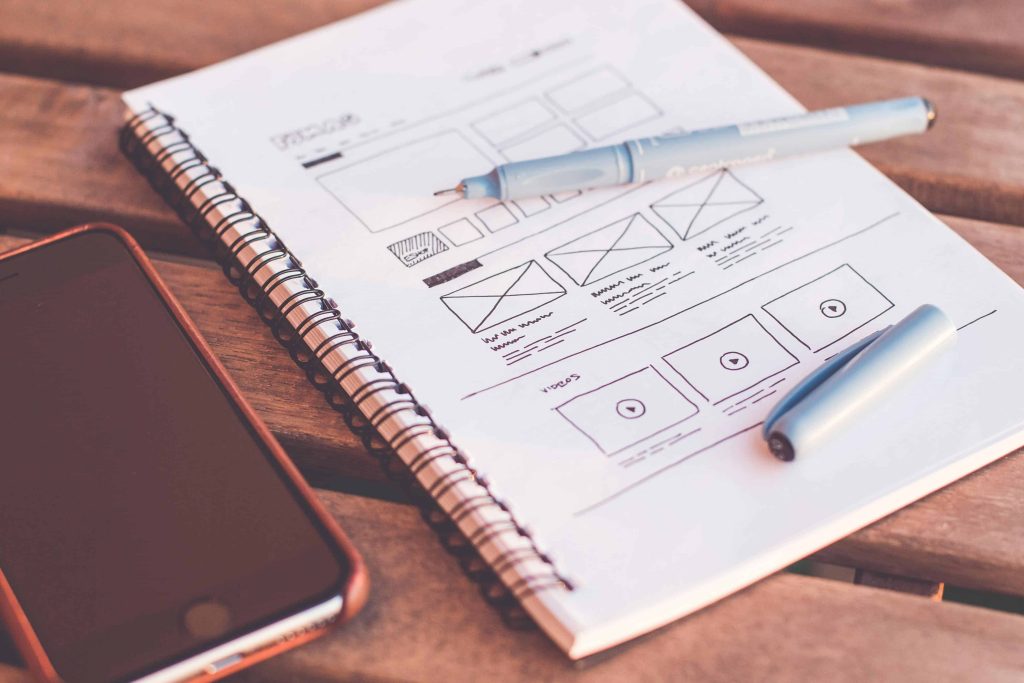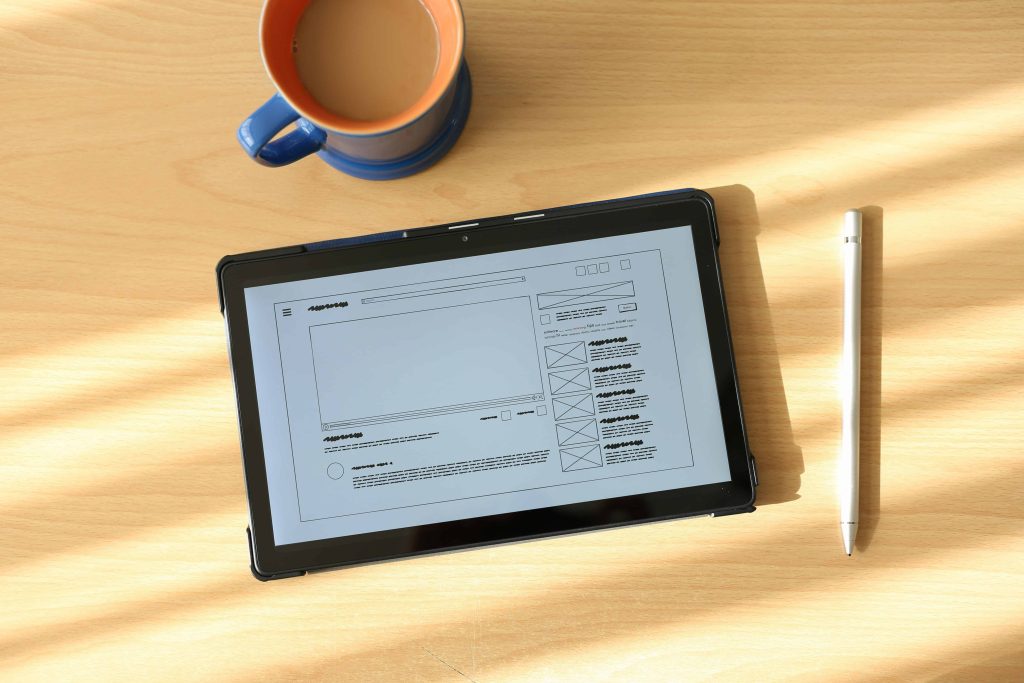
18 Sep The Art of Fusion: Aesthetics and Usability in Seamless UI Design
Introduction
In the dynamic realm of digital interfaces, user interface (UI) design plays a pivotal role in shaping user experiences. Balancing aesthetics and usability is not just a design challenge but a fundamental necessity for creating interfaces that captivate and serve users effectively. Prioritizing one over the other can lead to suboptimal outcomes, underscoring the need for a delicate equilibrium between visual appeal and functional efficiency.
Understanding Aesthetics in UI Design
Crucial as aesthetic principles are foundational to visually engaging interfaces, significantly shaping user perception. Key components include:
Color Psychology
Colors exert a profound impact on emotions and user actions. Thoughtful color choices have the power to evoke specific feelings, fostering a connection between the user and the interface. Careful consideration of color psychology guides users seamlessly through a digital experience.
Typography
Font choices extend beyond stylistic preferences, playing a crucial role in creating hierarchy and enhancing legibility. The right typography contributes to effective communication, ensuring that users can easily comprehend and engage with the presented information.
Imagery and Whitespace
Visual elements and whitespace are often underestimated heroes of UI design. They establish visual balance, prevent clutter, and direct user focus. Well-curated imagery and strategic use of whitespace contribute to a clean, uncluttered interface, enhancing overall user satisfaction.
Layout and Composition
Principles like proximity and symmetry govern layout, directly influencing the user experience. Understanding these principles is vital for creating harmonious and intuitive interfaces. Properly implemented layout and composition principles contribute to a seamless and user-friendly navigation experience, positively impacting overall usability.
Prioritizing Usability in UI Design
Usability, the bedrock of user-centric design, is essential for ensuring users can efficiently interact with digital platforms. Core principles include:
User-Centered Design Approach
Prioritizing a user-centered design approach is foundational. Understanding user needs and goals is paramount. Designing with the end user in mind ensures the creation of interfaces that resonate with the intended audience, fostering a positive user experience.
Usability Heuristics
Guiding design principles, such as consistency, feedback, and error prevention, lay the foundation for optimal user interaction and satisfaction. Usability heuristics serve as a compass, directing designers towards creating interfaces that are intuitive, predictable, and user-friendly, ultimately enhancing overall usability.
Information Architecture
Efficient navigation is contingent on how content is organized. A well-structured information architecture enhances the user’s ability to locate and consume information effortlessly. Thoughtful categorization and hierarchy contribute to a seamless user journey, ensuring that users can easily navigate through the digital landscape.
Accessibility
Inclusivity is a non-negotiable aspect of usability. Ensuring that interfaces are accessible to users with disabilities broadens the reach and impact of digital products. Implementing accessibility features not only aligns with ethical design practices but also contributes to a more diverse and inclusive user base, reinforcing the significance of designing for all users.
Strategies for Balancing Aesthetics and Usability
Iterative Design
Embark on the design journey by establishing a robust functional core. Gradually infuse aesthetic elements in iterative cycles, allowing for the evolution of both form and function over successive design iterations.
Usability Testing
Leverage real-world user insights to refine and enhance designs. Regular usability testing ensures that the evolving aesthetics harmonize with user expectations, refining the interface to optimize both appeal and practicality.
Visual Hierarchy
Strategically employ size, color, and placement to create a visual hierarchy, guiding users intuitively through the interface. Prioritize usability elements, ensuring a seamless blend of aesthetics and functionality that enhances the overall user experience.
Microinteractions
Elevate user engagement by integrating subtle animations and feedback. These microinteractions not only enhance usability but also contribute to user delight, fostering a positive perception of the design’s quality and attention to detail.
Branding
Immerse brand identity seamlessly into the design framework. A successful merger of brand elements with usability and aesthetics creates a cohesive and memorable user experience, reinforcing brand recognition while delivering a visually pleasing and functional interface.
Conclusion
In conclusion, achieving a harmonious equilibrium between aesthetics and usability is the cornerstone of effective UI design. Understanding the profound impact of color psychology, typography, imagery, and layout on user perception forms the foundation for visually engaging interfaces. Simultaneously, prioritizing usability through a user-centered approach, adherence to usability heuristics, efficient information architecture, and accessibility considerations ensures the seamless interaction of users with digital platforms. The strategic implementation of iterative design, usability testing, visual hierarchy, microinteractions, and branding underscores the dynamic nature of achieving balance. In this delicate interplay, successful UI design emerges as a synergy between captivating aesthetics and user-centric functionality, culminating in a memorable and satisfying user experience.
Key Takeaways
- Essential Equilibrium: Striking a delicate balance between aesthetics and usability is crucial for effective UI design, avoiding suboptimal outcomes.
- Aesthetic Foundations: Understanding color psychology, typography, imagery, and layout principles creates visually engaging interfaces, fostering user connection and satisfaction.
- Usability Priority: Prioritizing usability through a user-centered approach, heuristics, information architecture, and accessibility ensures efficient interaction and broadens product reach.
- Strategic Tools: Employing iterative design, usability testing, visual hierarchy, microinteractions, and branding as strategic tools ensures a dynamic and harmonious UI design.
- Synergy for Impact: Successful UI design is a synergy between captivating aesthetics and user-centric functionality, delivering a memorable, satisfying experience and reinforcing brand recognition.
Frequently Asked Questions
How do aesthetics impact the user experience in UI design?
Aesthetics, including color psychology, typography, imagery, and layout, greatly influence user perception, fostering emotional connections and enhancing engagement with digital interfaces.
What role does usability play in UI design?
Usability is foundational, ensuring efficient user interaction through principles like user-centered design, usability heuristics, information architecture, and accessibility, ultimately broadening product reach and enhancing user satisfaction.
How can designers balance aesthetics and usability effectively?
Designers achieve balance through iterative design processes, usability testing, strategic visual hierarchy, microinteractions, and seamless integration of branding, ensuring both captivating aesthetics and user-centric functionality for a memorable user experience.
Unravel the complexities inherent in trademarking your website, logos, and digital content, guided by our meticulously curated and comprehensive resource.




